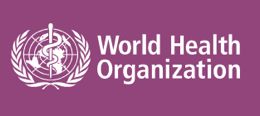A multidrug-resistant type of tuberculosis is at the top of the list of priority pathogens for developing new antibiotics, but at least three foodborne bacteria are also high-priority status.
The foodborne pathogens of Salmonella, Campylobacter and Helicobacter pylori are near the top of the list of 20 antimicrobial-resistant bacteria identified by a World Health Organization (WHO) working group.
 Published in The Lancet, the findings from the WHO working group describe a wide variety of factors used during the project to determine what bacteria should be targeted. Ten-Year resistance trends, preventability and treatability were among the criteria used to categorize bacteria into critical, high and medium priority groups.
Published in The Lancet, the findings from the WHO working group describe a wide variety of factors used during the project to determine what bacteria should be targeted. Ten-Year resistance trends, preventability and treatability were among the criteria used to categorize bacteria into critical, high and medium priority groups.
In a commentary in the same issue of The Lancet, Glenn Tillotson, senior vice president of medical affairs with Cempra Pharmaceuticals in Chapel Hill, NC, complimented the working group’s process.
“The statistical approach used by Tacconelli and colleagues to establish the list of antibiotic-resistant bacteria was of the highest standard, with multiple experts enlisted to provide input into a complex process. A factor that stood out was the use of six WHO regions to support the overall process,” Tillotson wrote.
The purpose of the list of priority pathogens is to encourage development of specific, new antibiotics. However, such decisions are ultimately left to industry as the WHO does not have the authority to force research on specific medications.
(To sign up for a free subscription to Food Safety News, click here.)
